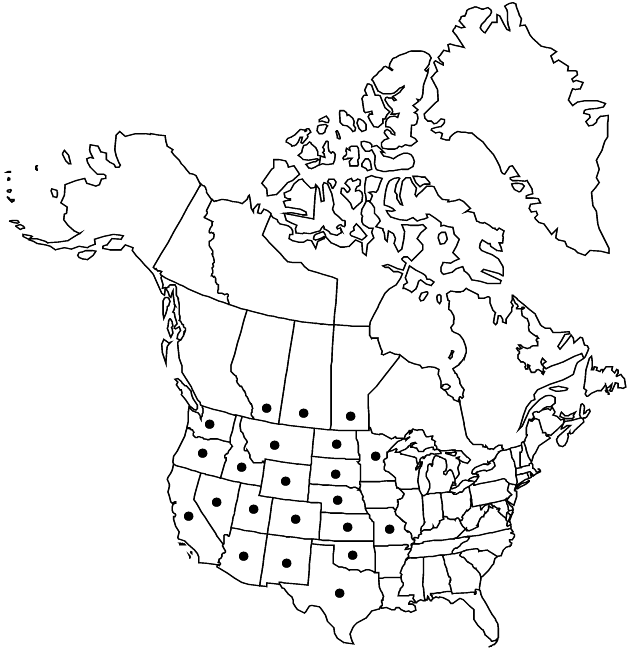Ambrosia acanthicarpa
Fl. Bor.-Amer. 1: 309. 1833.
Annuals, 10–80+ cm. Stems erect. Leaves opposite (proximal) and alternate; petioles 5–15 (–25+) mm; blades ± deltate, 15–40 (–85+) × 12–35 (–80+) mm, 1–2-pinnately lobed, bases cuneate, ultimate margins entire or toothed, abaxial faces hispid and strigillose to sericeous, adaxial faces strigillose and glanddotted. Pistillate heads clustered, proximal to staminates; florets 1. Staminate heads: peduncles 0.5–2 mm; involucres shallowly cupshaped (usually each with 1–5+ black nerves), 3–5 (–7) mm diam., sparsely hirsute or glabrous; florets 6–12 (–20+). Burs: bodies fusiform to obpyramidal, 3–5 mm, ± hirsutulous or glabrate, spines 8–18+, scattered, stoutly subulate (sometimes basally flattened or navicular), 2–4 (–5) mm, tips straight or uncinate. 2n = 36.
Phenology: Flowering (Apr–)Jul–Nov.
Habitat: Canyons, sandy flats, dunes
Elevation: 10–3000 m
Distribution

Alta., Man., Sask., Ariz., Calif., Colo., Idaho, Kans., Minn., Mo., Mont., Nebr., Nev., N.Mex., N.Dak., Okla., Oreg., S.Dak., Tex., Utah, Wash., Wyo.
Discussion
Selected References
None.
Lower Taxa
"glabrate" is not a number. "hirsutulous" is not a number.